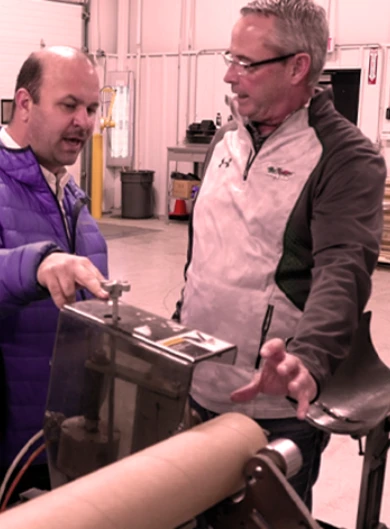PRODUCT FINDER
Which products are best for you?

P610 Programmable Core Cutter
Appleton P610 Core Cutter – Large Core Capacity in a Programmable Core Cutter
The P610 Programmable Core Cutter can process parent cores from 3” to 24” ID (with appropriate tooling) with wall thicknesses to 1” and up to 30 feet in length. The P610 has the flexibility to cut parent cores of varying lengths due to its ability to sense the end of the core and start the next cutting cycle and is easily adjusted for different core ID’s by simply changing the chuck and cutting pad.
Specs
Parent Core Length Range
Core Diameter Range
Wall Thickness
Auto Indexing Knife
Cut Length Range
Cut Length Tolerance
Utilities
Options/Upgrades
Options
Units of Measure
Cutting Pad and Chuck Jaw Set
Length
RS232 Serial Interface
Additional Cut Set Storage
Special Paint
Electrical Components
Updates
Automated Core Handling
Short Core Tray or Full Length Core Tray
Core Printer
The Appleton Cut
Appleton Manufacturing is the only core cutter manufacturer utilizing the specific combination of a fixed knife to slit the core and internally-driven core rotation while supporting the inner ply with a carbide pad, which is used to pinch the inner ply of the core between the cutting edge of the knife, allowing for a consistently accurate and clean cut all the way through the core. This technology allows for every core cut on an Appleton to have a crisp, clean and virtually dust-free polished cut. It’s what we at Appleton call “The Magic of the Appleton Cut”.
Appleton Manufacturing’s Core Cutters offer several benefits to slitting a core as opposed to saw or crush cutting them:
Appleton’s cutting technology is available on all Appleton Core Cutters from our basic Semi-Automatic S210, through our Automatic A301 and A400s, as well as the Programmable P510 and P520 and up to our fully automated P610 and Multiple Diameter High Speed (MDHS) cutters.
Lower Quality Core Cutting Types



Which products are best for you?

Back to Top
